The OnePlus 6 Review: Among The Best Of 2018
by Andrei Frumusanu on July 27, 2018 8:30 AM EST- Posted in
- Mobile
- Smartphones
- OnePlus
- OnePlus 6
Camera - Low Light Evaluation
For the night time shots, I wanted to change it up a bit and chose to take the photos at sun-down, which resulted with still some light in the sky. These conditions are more challenging for the phones as they need to decide on the right exposure and possibly HDR processing.
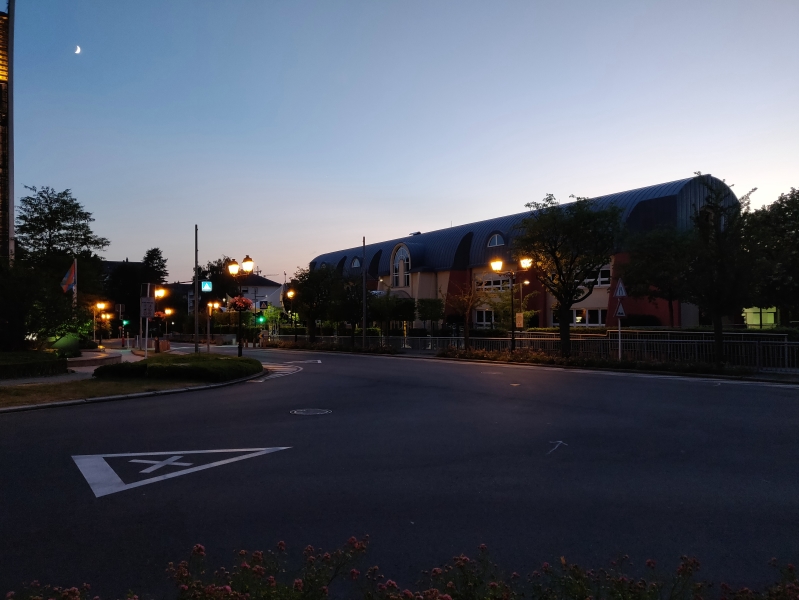
[ OnePlus 6 ]
[ G7 ] - [ G6 ] - [ V30 ]
[ Mi MIX 2S ] - [ Pixel 2 XL ] - [ Mate 10 ] - [ P20 ]
[ P20 Pro ] - [ S8 ] - [ S9+ ] - [ iPhone X ]
The OnePlus 6 on paper is at a disadvantage here as its f/1.7 lens and 1.22µm pixel pitch shouldn’t be able to keep up with the 1.4µm and larger aperture phones.
This first shot is evident of that as although it still manages a respectable result, it lacks the shadow detail of other phones. Using some manual exposure compensation to brighten up the scene would have been beneficial to the OP6.
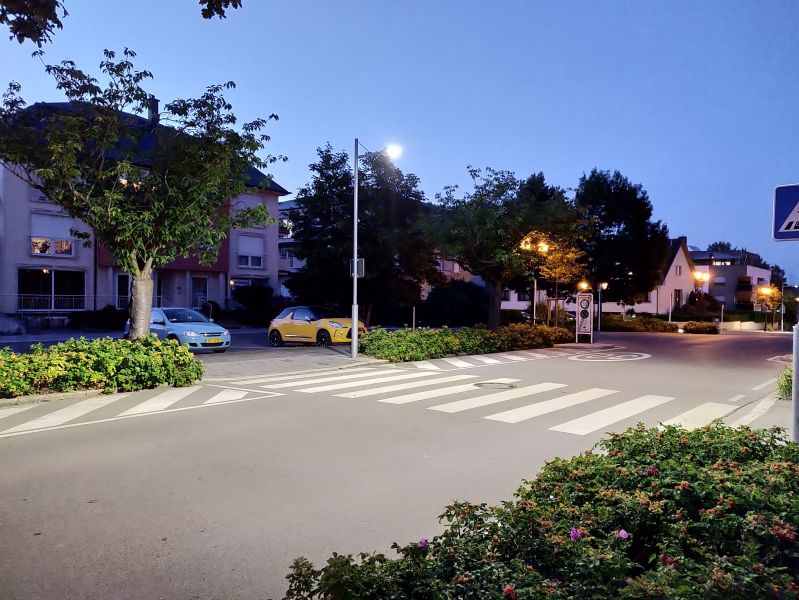
[ OnePlus 6 ]
[ G7 ] - [ G6 ] - [ V30 ] - [ Mi MIX 2S ] - [ Pixel 2 XL ] - [ Mate 10 ]
[ P20 ] - [ P20 Pro ] - [ S8 ] - [ S9+ ] - [ iPhone X ]
This road crossing was one of the rare scenes where the OP6 wans’t really consistent with its shots and gave three consecutive different results. All three shots have the same exposure and ISO settings so the difference in brightness seems to be purely due to the resulting processing, with the third shot being the most natural and the first two having varying degrees of HDR processing flattening out the image to bring out the shadows.
Overall the shots of the OP6 here are still quite good, although it lacks the natural background shadow detail of other phones. It’s still able to maintain the natural spotlight of the street lamp, and more importantly, it got the white colour temperature of the light a lot more correct than other phones.
In terms of detail if feels like the OP6 is employing sharpening and artificial contrast. The third sample is by far the best here as it also has less visible noise artefacts.

[ OnePlus 6 ]
[ G7 ] - [ G6 ] - [ V30 ] - [ Mi MIX 2S ] - [ Pixel 2 XL ]
[ Mate 10 ] - [ P20 ] - [ P20 Pro ]
[ S8 ] - [ S9+ ] - [ iPhone X ]
In this second scene the OP6 was more consistent and all the captured shots looked the same. Again it’s doing “OK” in terms of results, competing well in terms of sharpness but just doesn’t have the dynamic range to capture as much shadows in the scene.
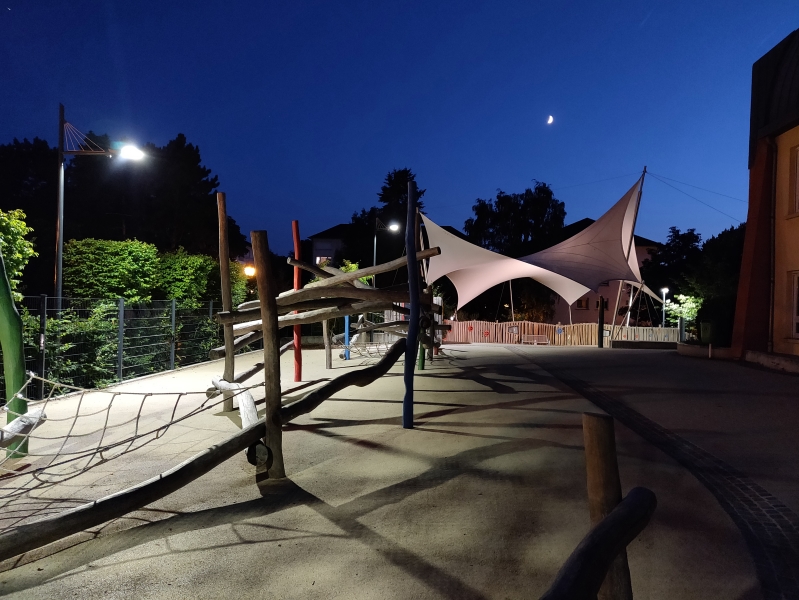
[ OnePlus 6 ]
[ G7 ] - [ G6 ] - [ V30 ] - [ Mi MIX 2S ] - [ Pixel 2 XL ]
[ Mate 10 ] - [ P20 ] - [ P20 Pro ]
[ S8 ] - [ S9+ ] - [ iPhone X ]
Going to darker scenarios here at the playground, one aspect where the OP6 does very well is capturing the accurate white colour temperature of the lamps, while for example the S9 and G7 and Pixel 2 got it really wrong.
While again lacking in terms of some of the shadows, the details captured are actually quite good and the OP6 manages to compete with the S9 in terms of textures, only the V30 does better. Of course the P20Pro wins out in terms of dynamic range in its pixel binning 10MP mode, even though its night mode shot is more representative of the real light distribution.
Extreme Low Light
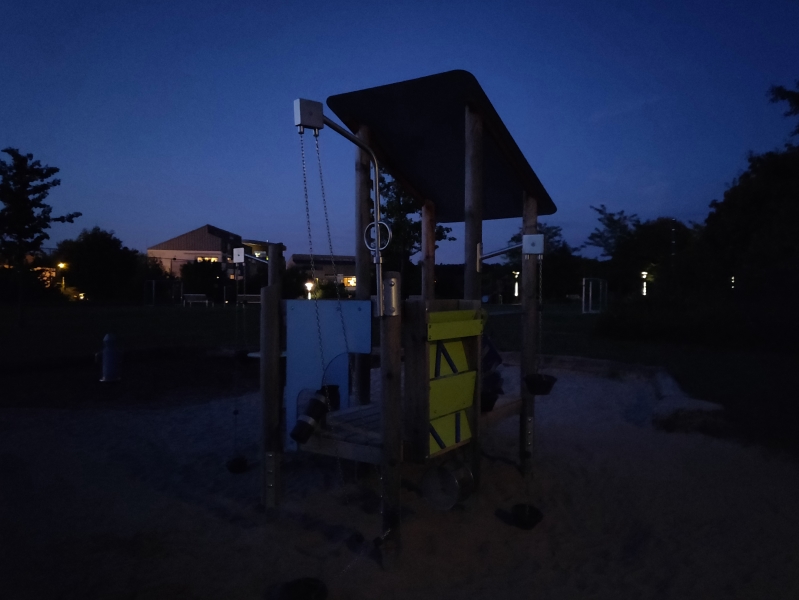
[ OnePlus 6 ]
[ G7 ] - [ G6 ] - [ V30 ] - [ Mi MIX 2S ] - [ Pixel 2 XL ]
[ Mate 10 ] - [ P20 ] - [ P20 Pro ]
[ S8 ] - [ S9+ ] - [ iPhone X ]
Finally in the last extreme low light shot the OnePlus 6 just didn’t fare well. It just didn’t have sufficient light capture capabilities to get a reasonable shot. Here OnePlus could have introduced a pixel binning feature such as on the LG G7 and V30 in order to trade off resolution for light sensitivity.
Overall in low-light shots, the OnePlus 6 just doesn’t have the raw hardware required to perform quite as well as other phones. The results are still extremely competitive and by no means a deal-breaker, it’s just that by now we’d see some kind of usage of that secondary camera module. Unfortunately that’s not the case for the OP6.
OxygenOS 5.1.9 Camera Update
One larger disclaimer I have to make is that the camera evaluation was done on the 5.1.8 firmware before the 5.1.9 version came out which promised “improved camera quality”.
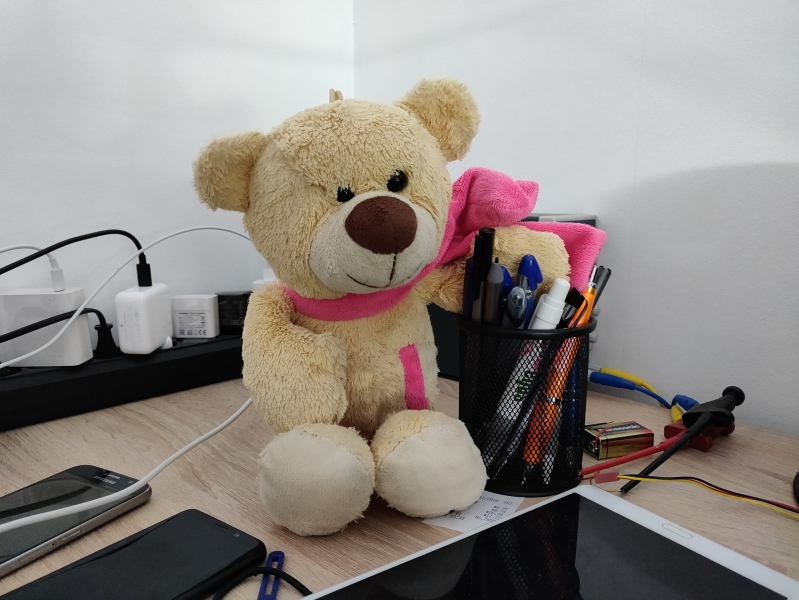
[ Dim Light 1 ] - [ Dim Light 2 ] - [ Flowers ] - [ Daylight ]
I did some limited A/B testing on my review device and it seems the camera changes are limited to low-light scenarios. In the daylight scenes the differences were minute if at all present.
In the low-light shots however there’s been a markable behaviour change as the new firmware seems to prefer to longer exposure and ISO settings. The surprising here is that this doesn’t result in a brighter picture in the above shots, but rather very much the opposite as the phone produced a darker and actually more representative reproduction of the scene. What was actually gained was more dynamic range. In terms of detail retention however I feel there’s been a notable regression.
Unfortunately re-doing the whole camera evaluation takes a lot of time and we’ll have to revisit the update in more detail in a future review with another round across all phones.










90 Comments
View All Comments
jospoortvliet - Thursday, August 2, 2018 - link
On screen buttons, really? the 90's want you back... Nokia n9 and Palm WebOS showed the future years ago, it is a bloody shame it took Apple to bring it to Android. Very disappointing to notice so clearly that Google only innovated when forced, even though the better paradigm was already shown to work and just lying there to be adopted..Thefinn - Friday, July 27, 2018 - link
Yeah, notch makes it useless. I don't think so.What are you smoking? It's actually a great phone, but to each his own
amosbatto - Wednesday, August 22, 2018 - link
The problem with the notch is that it gives less space for the notification icons, which I find useful. Even worse is that 19.5:9 screens leave no room for front-facing speakers. Decent audio is far more important than more vertical pixels which I will never use. Also, the smaller the bezel, the less protection for the screen. Of course, when you make phones entirely wrapped in glass, you basically are inviting for it to be cracked. Unfortunately, nobody makes a decent phone like the LG V20 anymore, that is durable and designed to survive drops.128bit - Friday, July 27, 2018 - link
I'm using s9 plus and iphone x and nope screen of s9 plus might be has higher resoulation and excellent brghtiness, but still not as good as iphone x OLED there's black crash at low brightness even though its made by samsung. Apple knows how to calibrate there screen very well and notch isn't on iphone x like android phones wanna be iphone.id4andrei - Saturday, July 28, 2018 - link
The problem you're referring to is an Android problem and that is the lack of a proper color management system. Samsung has color profiles corresponding to different standards such as sRGB or AdobeRGB built in but it's not a full solution.Skelter - Friday, July 27, 2018 - link
After one month with the phone, I don't get the notch hate that seems to be trending in all tech related sites. There's really no downside to it. It hides on its own when needed and gives you extra screen space over what would have been otherwise a bezel. If you really hate how it looks, you can just hide it and the device will look like it was made with the same bezels the S9+ has.The only downsides the phone has, in my opinion, are the speaker (not bad, but not flagship worthy either), the glass back without wireless charging (not a deal breaker at all, but it would have been nice to get either Wireless Charging or a tougher design) and the camera (which is, at least since the last update improved its quality, almost as good as Pixel 2/iPhone X/S9).
By the way, I wouldn't say Samsung's S9 has "nearly the same price". Even if you buy the cheapest S9 model Samsung is offering, there's still a $140 difference. Maybe it's worth it for some, since its screen is the best there is (even if it is smaller in the basic S9 model), its camera is slightly better and it has Wireless Charging and an IP68 rating. But that doesn't make OP6 a bad choice at all.
johnhopf - Friday, July 27, 2018 - link
Your review is great, but I really object to this kind of camera evaluation.The only way you can take a decent landscape shot with the sky in it, is if the sun is setting behind you so the sky in front of you is dark and the scenery is illuminated.
When you take a photo of midday sky and trees underneath it, the sky is probably 50 times brighter than the trees, and the only way to bring them in line is insane over-the-top "hdr" that gives the whole image the same mezzo-blah brightness.
I'd recommend looking at real art photography for a while, to see how the shadows actually clip into blackness. My favorite photographer lately is Jay Maisel, and he has lots of good photos on his website.
Andrei Frumusanu - Friday, July 27, 2018 - link
> When you take a photo of midday sky and trees underneath it, the sky is probably 50 times brighter than the trees, and the only way to bring them in line is insane over-the-top "hdr" that gives the whole image the same mezzo-blah brightness.> I'd recommend looking at real art photography for a while
Sorry to be blunt here, but most people don't care about art photography. The notion that you can only take a picture with the sun behind you is also outdated, the average person is not going to follow any of that advice. On the day I took those pictures I had dozens of tourists around me taking the pictures with their smartphones, for those people, they expect the smartphone to just deal with the circumstances.
The point of these comparisons is to put the phone into difficult situations and see how they behave. Computational photography is very much a thing and it opens up new avenues. Look at the bridge photo of the P20Pro - it manages to do that because it has the technology in the sensor to do a different exposure for each physical pixel in the binned logical pixel, resulting in outstanding DR. Also as demonstrated by the OP6 here and some other phones, the results can actually be quite good if the HDR is well tuned.
If one phone manages to do well then it means it raises the bar in terms of what's to be expected of other flagship devices in general.
FunBunny2 - Friday, July 27, 2018 - link
if memory serves, Maisel has been using a view camera and contact printing for rather a long time. in any case, the dynamic range of film, using zone method, beats any minuscule phone sensor by a light year or so. but, just like the Kodak of the 1940s, phone snapshots aren't intended to be anything more than momentos. even a $100 digital camera will do better.Impulses - Tuesday, July 31, 2018 - link
I'd be surprised if any camera <$400 did better than a phone tbh, under that price bracket they'd feature the same miniscule sensors and often slower lenses (possibly better corrected and definitely able to stop down, but it's debatable how much you really need to stop down for DoF with these small sensors).Meanwhile smart HDR/stacking algorithms will definitely give phones an edge, these modes tend to suck even in high end cameras and photography enthusiasts just do it manually in post. Past $400 or so cameras definitely jump ahead tho, at that point you can easily buy something with a 1" (Canon G9 X) or even 4/3 sensor (Panasonic GX850).
Obviously these are not exactly $400 phones either, even the OP has blown significantly over that threshold, but still... I'm all in favor of suggesting people look at cameras rather than side-grading phones for marginal gains tho. I was impressed by my Pixel but I didn't buy it for the camera and still vastly prefer my dedicated cameras.